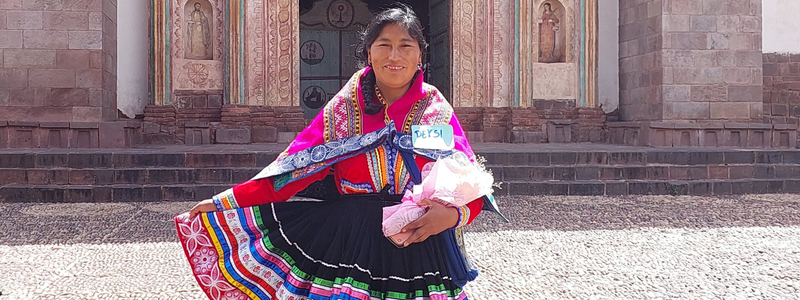
Fast Facts
- Almost half of women in the work force are classified as ‘vulnerable workers’ [1]
- The life expectancy of a person born in some rural areas is 20 years shorter than someone born in Lima[2]
- One rural woman out of three is unable to read or write[3]
- 78% of indigenous children live in poverty compared to 40% of children whose mother-tongue is Spanish[4]
- Only 20% of the population have access to formal banking[5]
What are the key challenges facing Peru?
Peru is famous for its Inca ruins, Amazonian jungle, and diverse and colourful culture. Despite its recent history of civil conflict and violence at the hands of the Shining Path terrorist movement which led to the loss of over 70,000 lives between 1980 and 2000, Peru is today one of the fastest growing economies in Latin America. With significant advances in poverty reduction over the past decade, the future for Peru seems bright. However, as with many emerging economies, this growth has too often led to deepening inequalities rather than promoting widespread and equitable development. The top 20% of the population controls over half of the national wealth[6] while almost a quarter of Peruvians continue live below the national poverty line of $2USD per day. [7] Access to safe, fair and meaningful employment remains a key challenge for many Peruvians with 46% of the adult workforce employed in ‘vulnerable’ employment[8]; that is forms of work characterized by low wages, low productivity and unsafe or unsanitary conditions which do not uphold workers’ fundamental rights. With many people working outside the formal economy, access to banking and credit is limited with only 20% of Peruvians having access to a personal bank account. [9] Peru’s growth has therefore left many people behind.
Poverty is far more acute in rural areas of Peru, with one in two rural dwellers living in poverty. [10] Rural communities experience higher rates of illiteracy, limited access to essential services such as health, education and electricity, high levels of food insecurity and poor infrastructure.[11] This leads to significant differences in key human development indicators such as education, health and life expectancy between different parts of the country, with residents of the capital Lima likely to live up to 20 years longer than a personal born in the southern highlands.[1] This inequality is particularly evident within indigenous communities with only 32% of indigenous children aged between 3 and 5 attending school, while national economic growth through extractive industries has often lead to the destruction of indigenous land and livelihoods. Women are also disproportionately affected by poverty in Peru. Only 56% of women have had any level of secondary education, and only 68% of women are active in the workforce. [2] Women are more likely to be engaged in informal and often unpaid work, spending three times as many minutes per day undertaking unpaid work than men and representing 80% of informal rural household labour. [3]
What is Mary MacKillop Today doing to respond to the need in Peru?
- Enhancing Women’s Civil Participation in Rural Peru
- Youth Entrepreneurship in Rural Peru
- Citizenship Training in Peru
- Community Health (Non-Development)
- Supporting the community work of the Sisters of Saint Joseph (Non-Development)
Completed Projects
- Vocational Training for Women and Young People in Rural Peru (completed June 2023)
- Sustainable Livelihoods Project (completed)
- School Agriculture Project (completed June 2022)
- Enhancing the Educational Environment for School Students in Rural Peru (completed June 2022)







